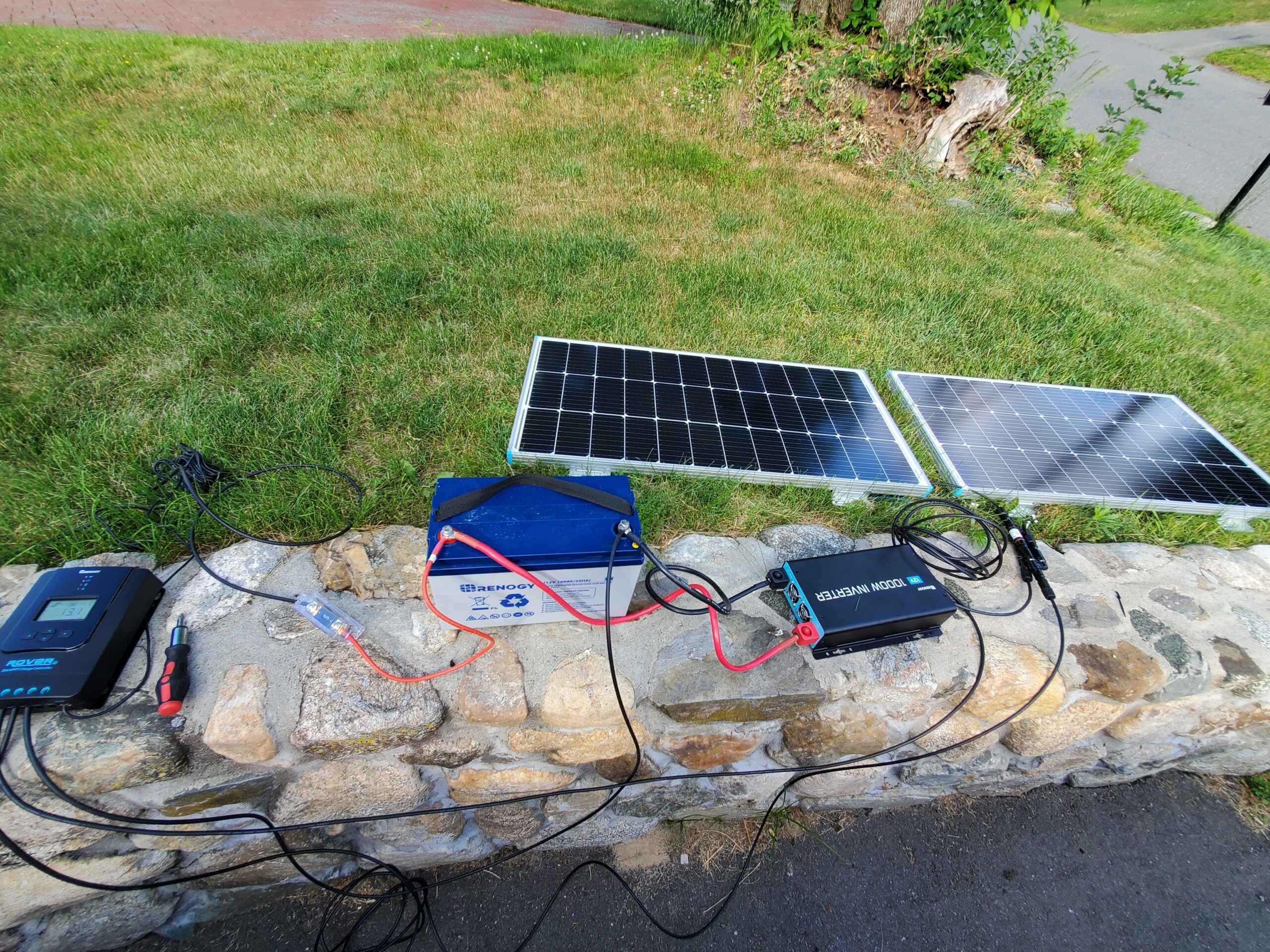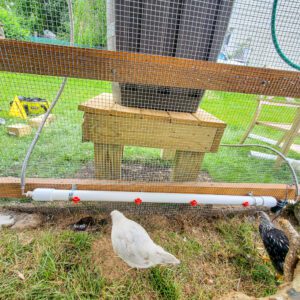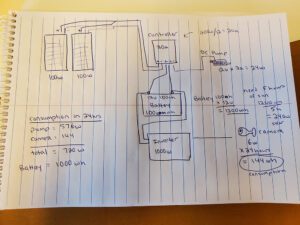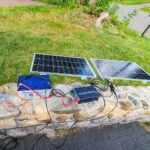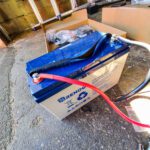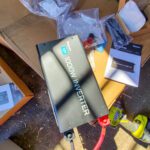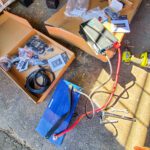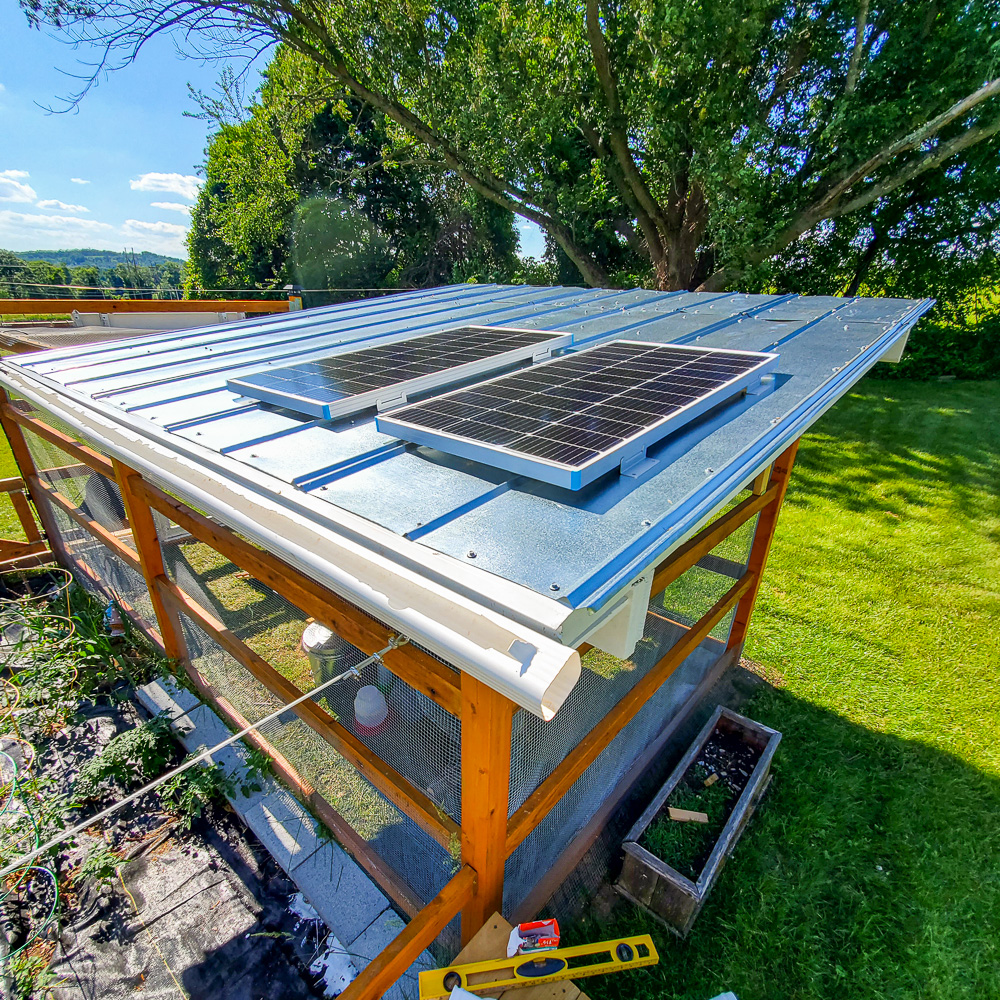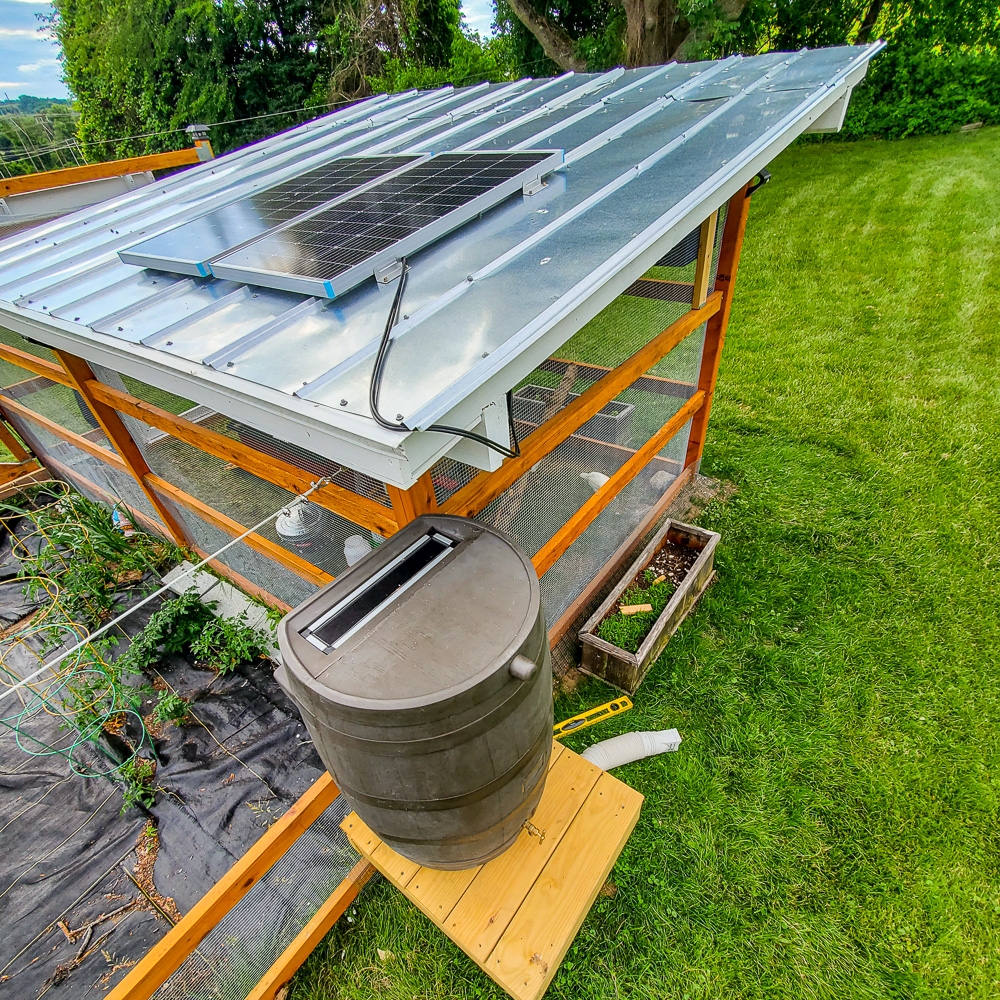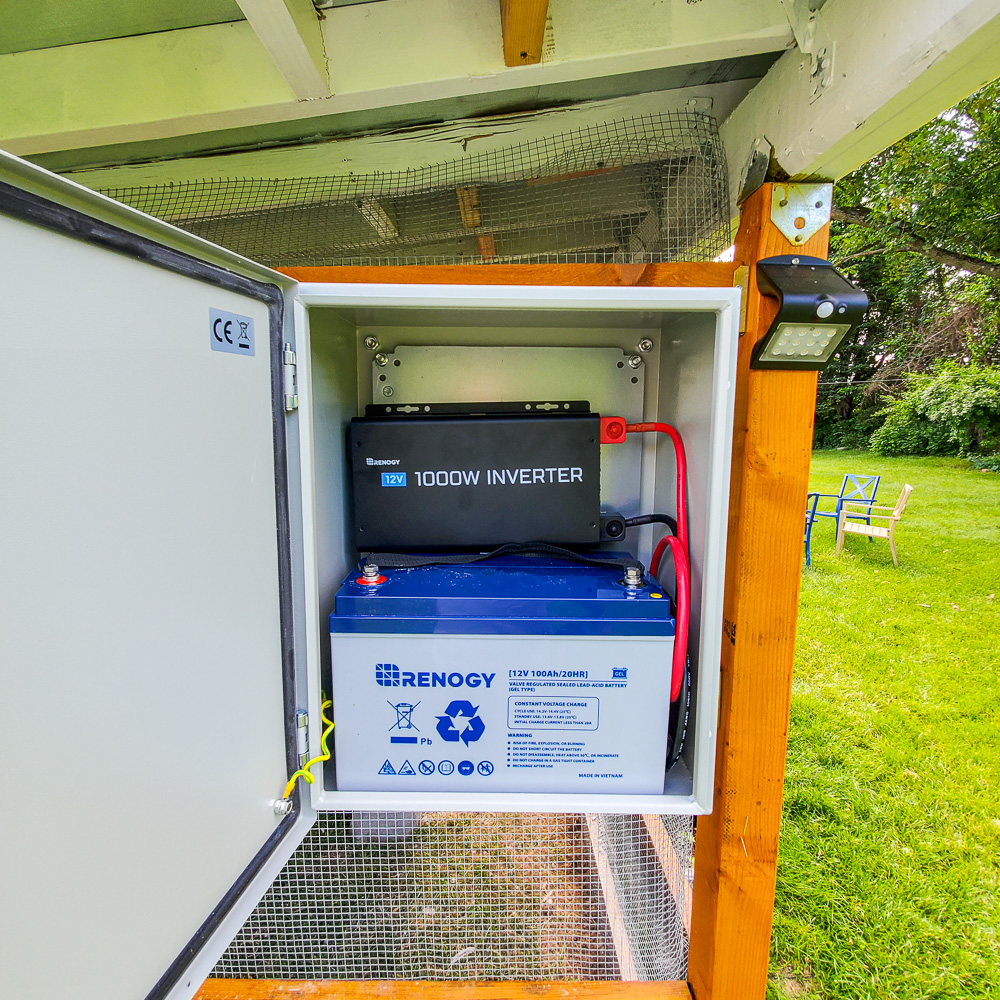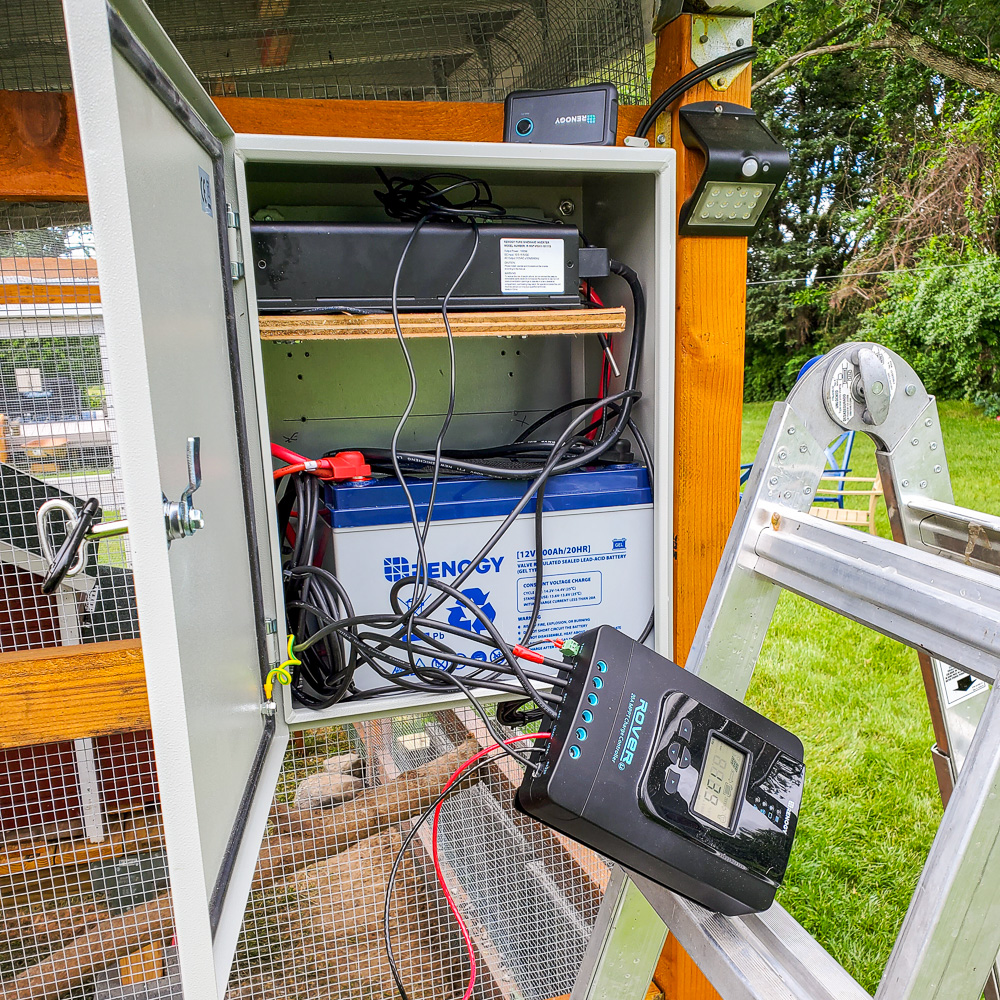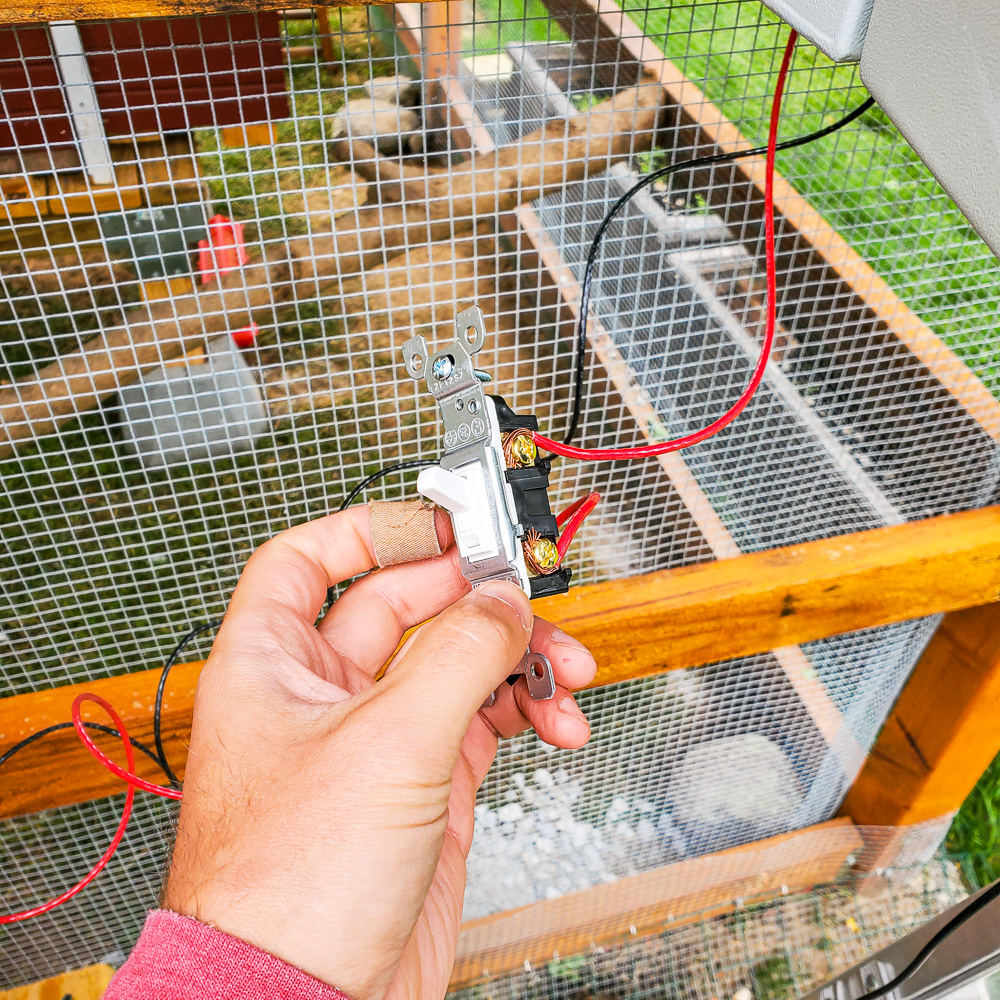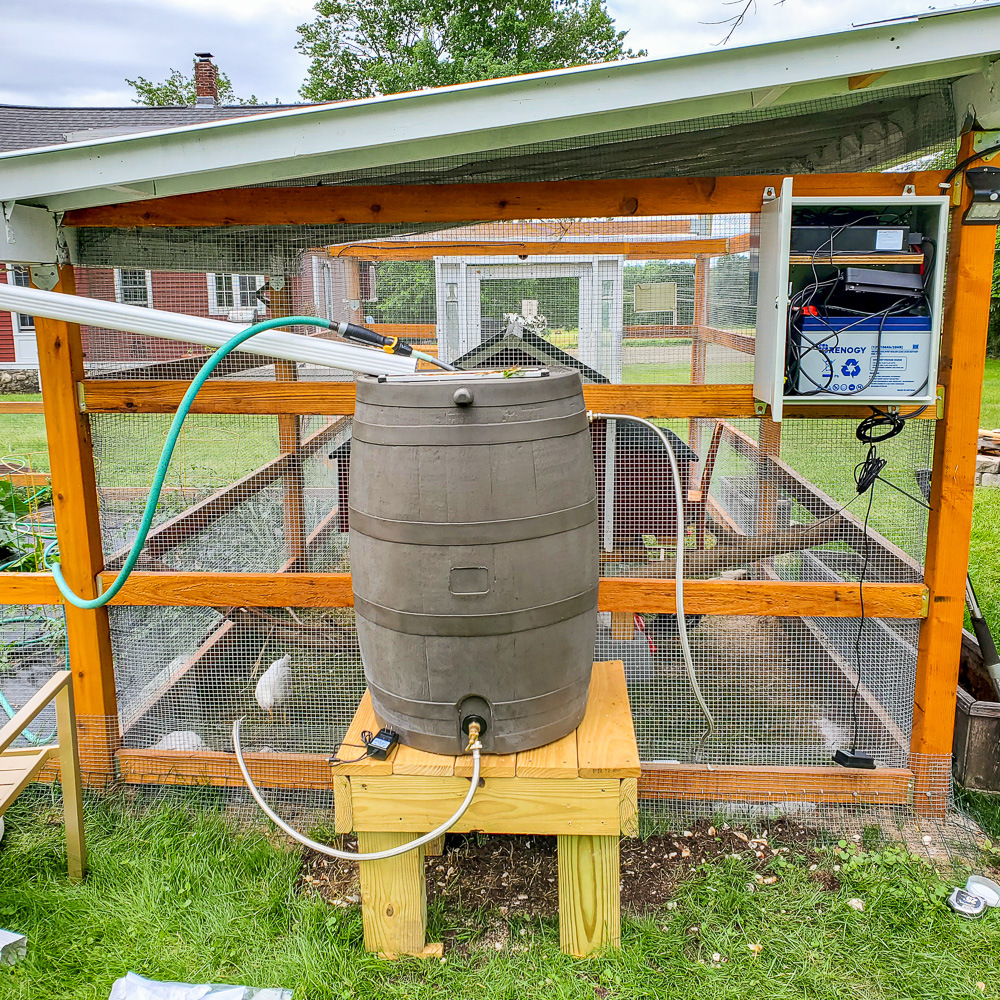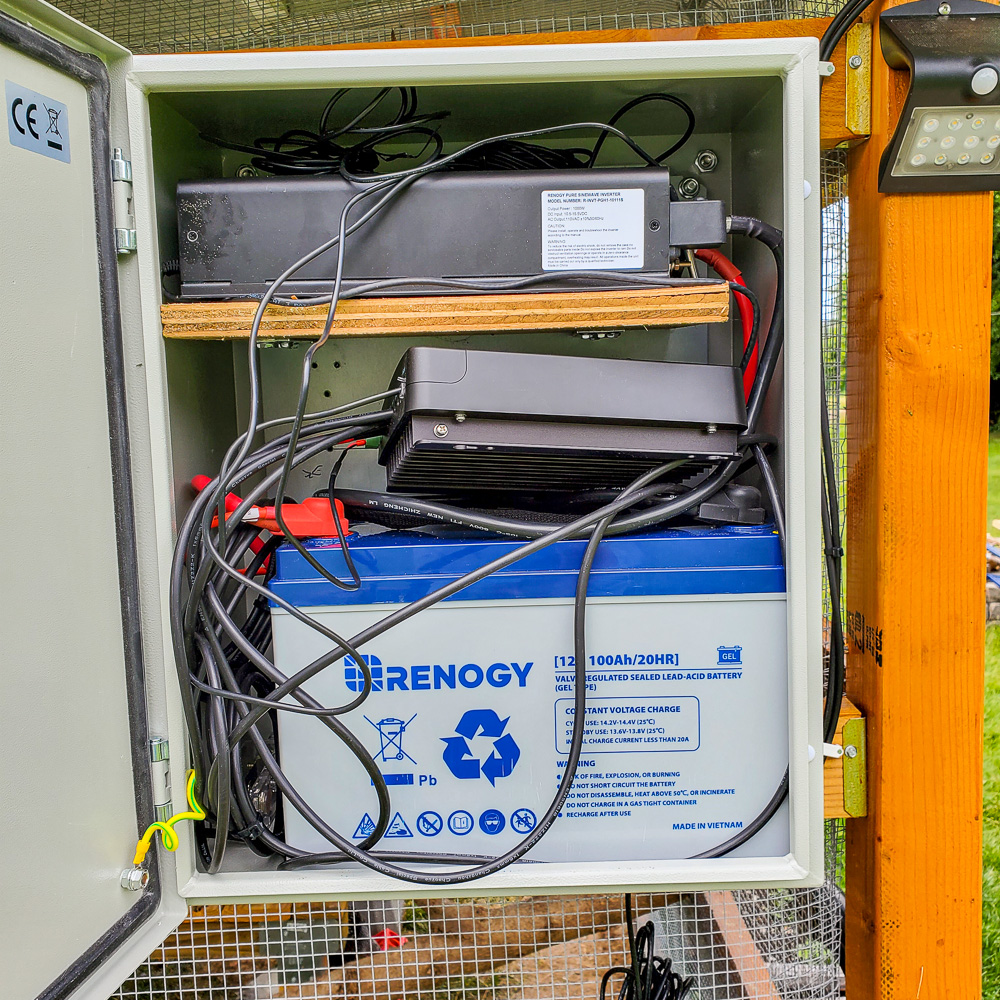Water Collection System
Once we started building the chicken run, I got it in my head that I wanted to have a water collection system to provide the chickens with virtually unlimited water. Since I built a roof over half the run, it was simply an extra few steps of adding gutters, water diverters, and buying a rain barrel. We already have a rain water collection system on our garage that we use to water the garden and various plants, so I’m familiar with the process and it’s pretty straight forward. Or so I thought!
I started looking into various gravity assisted chicken water bar setups, and the one from Carolina Coops was the most like what I was looking for, but it’s not cheap. You can source all of the parts yourself and build your own water system for a lot cheaper, or you can pay the premium and have Carolina Coops package everything up nice and neat for you. I opted for the later option. Their system includes:
- 4-nipple water bar (teehee)
- 12V water pump with DC power adapter
- 2 stainless steel hoses and all the fittings you’ll need
- Teflon tape and mounting hardware
This system creates a loop and cycles the water through the water bar and back into the rain barrel. For a basic water system setup you don’t need to make a loop, and can opt for just a gravity fed water bar, without the return hose or pump. Provided your barrel is raised high enough, this should work fine for most needs. But it does risk cracking or bursting the pipe when the temperature starts to drop below freezing. More on that below.
With supply chain issues, finding a rain barrel was harder than I expected. The first rain barrel I ordered online ended up being a scam Amazon seller. After a few back-and-forths with Amazon customer support, I was able to get a refund and eventually ordered the same rain barrel from Lowe’s. I opted not to buy the barrel stand (which you need to help gravity do it’s job), and instead built one out of scrap wood I had laying around. There’s some basic math involved with determining how tall the stand needs to be to provide the 1-2psi needed for the chicken nipples (teehee), but I hate math so I opted just to round up to an even 2 feet to make it easy.
With the rain barrel and water system in hand, it was time to put it all together. Assembling the water system was easy with the provided directions from Carolina Coops. I test fit everything inside before I brought it out to install in the chicken run. I’ll have to raise the bar over time, as the chickies grow, but for now it fit perfectly on the wood directly behind where we placed our rain barrel. It’s advised that the water system be on a North or East facing area, to minimize the amount of sun on it. A few snips of the steel mesh to feed the hoses through (and a few cut up fingers – seriously this stuff is sharp), and we had the system in place. Now to figure out how to power that pump it came with….
“Off Grid” Solar Powered Chicken Coop
Since the water system came with a pump to circulate the water, and we didn’t have electricity near our coop location, I started to look into designing a solar system setup to power the pump and a camera I wanted out there. Again, the roof over the run made for a perfect South facing spot to add a few panels. I started watching lots of YouTube videos on various solar setups, and I figured I’d could take a stab at a basic solar setup.
In my search, I found Renogy solar kits. Again, for a little bit of a premium, they provide you everything you need to install a basic entry level solar setup. They are a popular brand, backed by customer support, so I knew if I ever got into a bind where YouTube couldn’t help, their support would be able to answer any questions I had. You can save a bit of money by sourcing all these parts from different vendors, and even get cheap panels from Harbor Freight, but I went with convenience over cost since it was my first time.
I went with the 200 watt kit which included:
- 2 100 watt solar panels
- 20 Amp MPPT Charge Controller
- Solar panel mounting brackets and hardware
- 10 Amp in-line fuse and 20 Amp ANL Fuse
- and all the cabling you’d need: tray cables, fuse cables, etc
I also got the Renogy 100AH Gel Battery, and a 1000W Inverter (so I can run things off AC outlets). Based on my rough math, I think this combination of battery and panels would be able to power my DC water pump and AC camera. But like I said, I hate math.
- Testing the setup before I mount it
- 100AH Gel battery
- 1000W inverter for AC power
- Battery & Inverter test
Powered by the sun!
- Panels mounted on the roof
- Ran barrel and stand
- Looks like it will be a tight fit
- Messy cable pasta
After testing out the solar setup, I got the panels mounted on my roof. There’s plenty of space on the roof for more panels, if I ever decide to expand the system. And the good thing about these Renogy systems is that they are simple to add more components and expand later if my power demand outgrows my current system. I got a cheap waterproof metal electrical utility box to mount all the components in, and hung it on an exterior coop wall. This Renogy kit is pretty fool proof, and assuming you plug everything in in the correct order, you can’t really mess it up. It’s most important to note that you should never plug the solar panels into the controller without the battery plugged it, or you risk frying the contoller. The basic setup looks something like: Solar Panels > Solar Controller > Power into Battery > Inverter for AC power. Plugging it all in and seeing the icon light up indicating the solar panels are creating power is pretty damn cool. Free power from the sun – THE FUTURE!
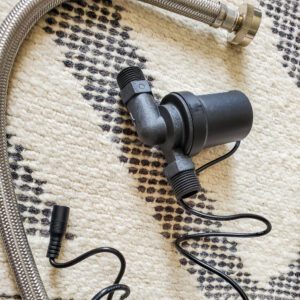 The last step was to wire the DC pump that came with the Carolina Coops kit. Again, I’d never done any sort of wiring or electrical work, so this was the part I was most unsure about. The pump came with a DC power adapter to be used with AC outlets, and I was relatively confident I could just cut the cable and wire it directly to DC. The Solar Controller from Renogy has dedicated output for DC power, and built in software that allow you turn on the DC output based on time of day or solar input. For now I decided to set the software for DC power to be always on, and then wire in a switch outside of the electrical box that I could use to manually control when the pump is on without having to access the controller.
The last step was to wire the DC pump that came with the Carolina Coops kit. Again, I’d never done any sort of wiring or electrical work, so this was the part I was most unsure about. The pump came with a DC power adapter to be used with AC outlets, and I was relatively confident I could just cut the cable and wire it directly to DC. The Solar Controller from Renogy has dedicated output for DC power, and built in software that allow you turn on the DC output based on time of day or solar input. For now I decided to set the software for DC power to be always on, and then wire in a switch outside of the electrical box that I could use to manually control when the pump is on without having to access the controller.
After a little more YouTube and some testing, I was ready to cut the cord on the pump and wire it up. I bought an exterior rated switch and junction box, and housed the wires in some leftover conduit I had from running ethernet to the coop. Finally, after slow progress over the past week, the system was nearly done. I tidied the cables up as best I could, and installed my camera in our coop. Now I had the pump and camera running completely off solar power!
Final Thoughts
Obviously most of this is overkill for chickens, and you can build similar systems cheaper by sourcing parts yourself, but the water and solar system we installed make this chicken coop nearly 100% ‘off grid’ and sustainable. Sure we could have had an electrician just run power out to our coop area, but solar had always been intriguing to me and now I learned a new skill. We could have opted for a water system without a pump, but I wanted the pump to keep the water circulating in the winter to slow down the freezing. I’ll need to figure out the water heating system; I’m not sure if a tank de-icer will be able to be run off solar power, but I still have a few more months to test that out. I’d also like to get the Omlet automatic coop door hooked into the solar system so that didn’t have to run on batteries.
It’s only been 24hrs, but all in all, I think this ‘off grid’ chicken coop setup is a success. The sun powers the coop and the rain gives the chickens plenty of water. The chickens in turn provide us with eggs (hopefully) and compost for our garden. Time will tell if my math was correct on sizing my solar system, but it wouldn’t be an Elan project if I didn’t have to go back and completely redo it because of my mistakes.
- Wiring a switch for the DC pump
- Messy cable pasta
- System nearly complete, filling the barrel to test
- Need some cable management

